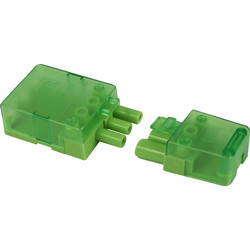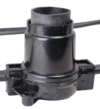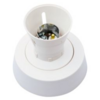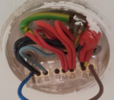The batten lamp holder in an en suit shower room ceiling was installed by the house builder around 2000. I imagine it met the regulations then. In a recent EICR assessment, I was told that the light has to be IPX4. Is the assessor being over-strict in the assessment? Is the light fittings a borderline case in meeting the regulations? I don't imagine the house builder would have gone too far wrong.
I assumed the wiring for the batten holder would be straight forward. When I opened it up, I was shocked to find almost a nuclear power station there. What is the best way for me to convert this to IPX4. Are there any particular light fittings that would work with the wiring junction as is?

I paid a lot of money for a cheap-ass (americanism is the most apt in this case) amazon ceiling light. It's money straight in the bin. Does anyone see any possibility of using this? I am absolutely not hopeful.

I assumed the wiring for the batten holder would be straight forward. When I opened it up, I was shocked to find almost a nuclear power station there. What is the best way for me to convert this to IPX4. Are there any particular light fittings that would work with the wiring junction as is?
I paid a lot of money for a cheap-ass (americanism is the most apt in this case) amazon ceiling light. It's money straight in the bin. Does anyone see any possibility of using this? I am absolutely not hopeful.






